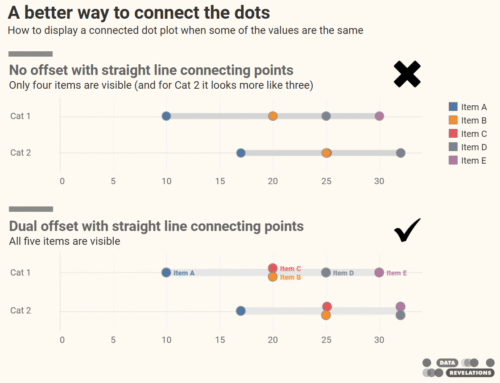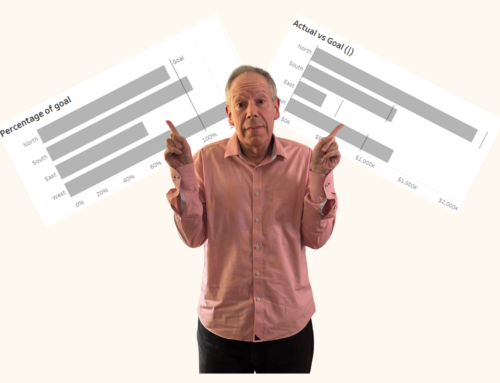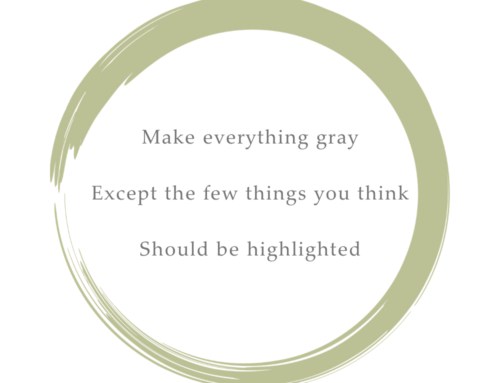Overview
I recently wrote about emotional vs. accurate comparisons and several people questioned whether the word “emotional” was appropriate. (Several people questioned my assertions, too. You can read their comments here.)
For this discussion I’ll use the term “engagement” in place of “emotion” and we’ll look into the challenges of creating public-facing visualizations that attract and engage, are clear and accurate, and do these things without “dumbing down” the subject matter.
Time Magazine and a cumbersome infographic
Stephen Few recently wrote a great post about the following infographic that appeared in Time Magazine in August, 2015.

Figure 1 — Time Magazine’s “Why we still need women’s equality day” infographic. See http://time.com/4010645/womens-equality-day/.
I have three major problems with this treatment.
- This is an important subject but the cutesy approach trivializes it.
- With so many chart types I have to work very hard to make comparisons among the different areas (Federal, Congressional, etc.). In addition, the chart is very long and requires a lot of scrolling.
- I strongly suspect that most people thought this was a dashboard having to do with Republicans and Democrats. I know that for me, whenever I see red and blue in a political context I think Republicans and Democrats and I had to fight this expectation to see that this was about men and women.
Stephen Few’s redesign
Here is Few’s redesign.
The collection of stacked bars makes it very simple to compare across the various categories and treats an important subject with the seriousness that is warranted.
But…
Few’s treatment is rather clinical and may be a little too dry for Time Magazine.
So, is there a way to fashion a graphic that is clear and accurate, like Few’s, but does more to draw the reader in?
Alberto Cairo’s redesign
Stephen Few asked Alberto Cairo to have a look at the source graphic and Cairo was able to turn out the following in a matter of minutes.
Here are Stephen Few’s comments upon seeing the redesign:
“Alberto,
You’re the man! I love your improvements to the graphic.
You described your version as middle ground between my position and that of the embellishers, but I don’t see it that way. I’m an advocate of the kinds of embellishments that you added to the graphic for journalistic purposes, for they don’t detract from the information in any way. I’ve always said that journalistic infographics can be both informative and beautiful without compromising either. Doing this takes skill, however, that relatively few of the folks producing infographics possess. It also takes graphic design skill that I don’t possess, which is why I don’t design journalistic infographics. You’ve illustrated what it takes to do this well. As I said, you’re the man.”
I think Cairo would be the first to agree that there are many shortcomings to his rendering (e.g., colors, the guy on right looks like he’s holding a boomerang and not reading a book, etc.) but remember, Cairo put this together in a few minutes simply to show that it is in fact possible to create something that is beautiful and emotionally engaging without sacrificing one pixel of analytic integrity.








